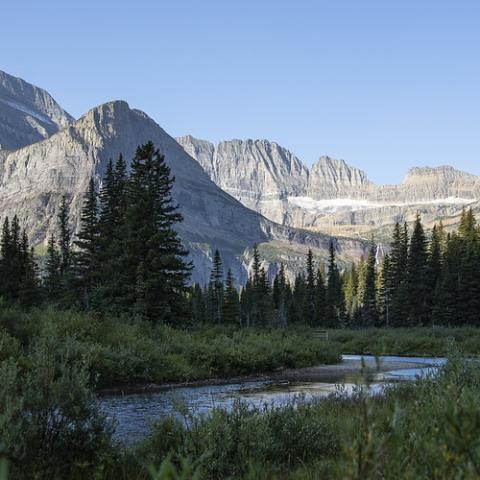
More parking is among the items Glacier National Park staff are looking at in managing the Going-to-the-Sun Road corridor/NPS file
Expanded shuttle bus operations, a few more hiking trails, and more parking are among the improvements Glacier National Park staff are talking about in a plan they're working on to manage the Going-to-the-Sun Road corridor that cuts east-west across the mountainous park.
The end goal, staff say, is to "improve access to public lands, promote a safe and enjoyable visitor experience and protect sensitive resources."
The plan’s proposed action includes the following management options (subject to certain thresholds):
- Expanding the shuttle system with additional buses, extended hours of daily service and six new stops
- Extending visitor center hours at Apgar and St. Mary Visitor Centers
- Adding approximately five miles of hiking trails, one-and-a-half miles of bike trails, and pit-toilets at a number of popular day-use areas
- Enhancing opportunities for bicycle use through the addition of bike trailers to shuttles, installing bike racks, and promoting bicycle-only events
- Improving circulation at Avalanche Campground by restoring a historic exit and converting camping to parking during peak season
- Managing traffic and parking using day-use parking permits for a portion of popular locations such as Logan Pass, St. Mary and Virginia Falls Trailhead, and prohibiting overnight parking in the corridor
- Constructing a new, 100-car parking lot on the west side of the park and expanding parking on the east side
“The public, local businesses, and elected officials have played an important role in this project from the beginning,” said Glacier Superintendent Jeff Mow. “Maintaining a quality experience while sustaining the park for generations to come will continue to be a community conversation as we develop tools and implement strategies to address substantial increases in visitation to our park and surrounding local areas.”
Between 2015 and 2017, visitation to the park grew by 40 percent to 3.3 million visitors. Visitation growth in areas like Logan Pass and Avalanche has led to vehicle closures and restrictions to prevent traffic gridlock and ensure emergency vehicle access.
During peak periods throughout the summer, visitors may wait up to two hours to board shuttles, and are frequently unable to find parking along the Going-to-the-Sun Road Corridor. Visitors are also faced with long lines for basic facilities such as restrooms and access to information desks.
Complaint letters from visitors have increased, describing crowding, lack of parking, and congestion conditions on the Sun Road. There have also been more vehicle accidents in 2019 than prior years on the Sun Road, and keeping up with disposing human waste has become a challenge.
You can find planning documents at this site. Comments can be posted on that page, or sent by mail to Superintendent, Glacier National Park, Attn: GTSR Corridor Management Plan, PO Box 128, West Glacier, Montana 59936.
On Tuesday, September 17, the park will host a public meeting in Kalispell, Montana, to discuss the plan at Flathead Valley Community College Arts & Technology Building #139 from 6 p.m.-8:30 pm.




 Support Essential Coverage of Essential Places
Support Essential Coverage of Essential Places







Add comment